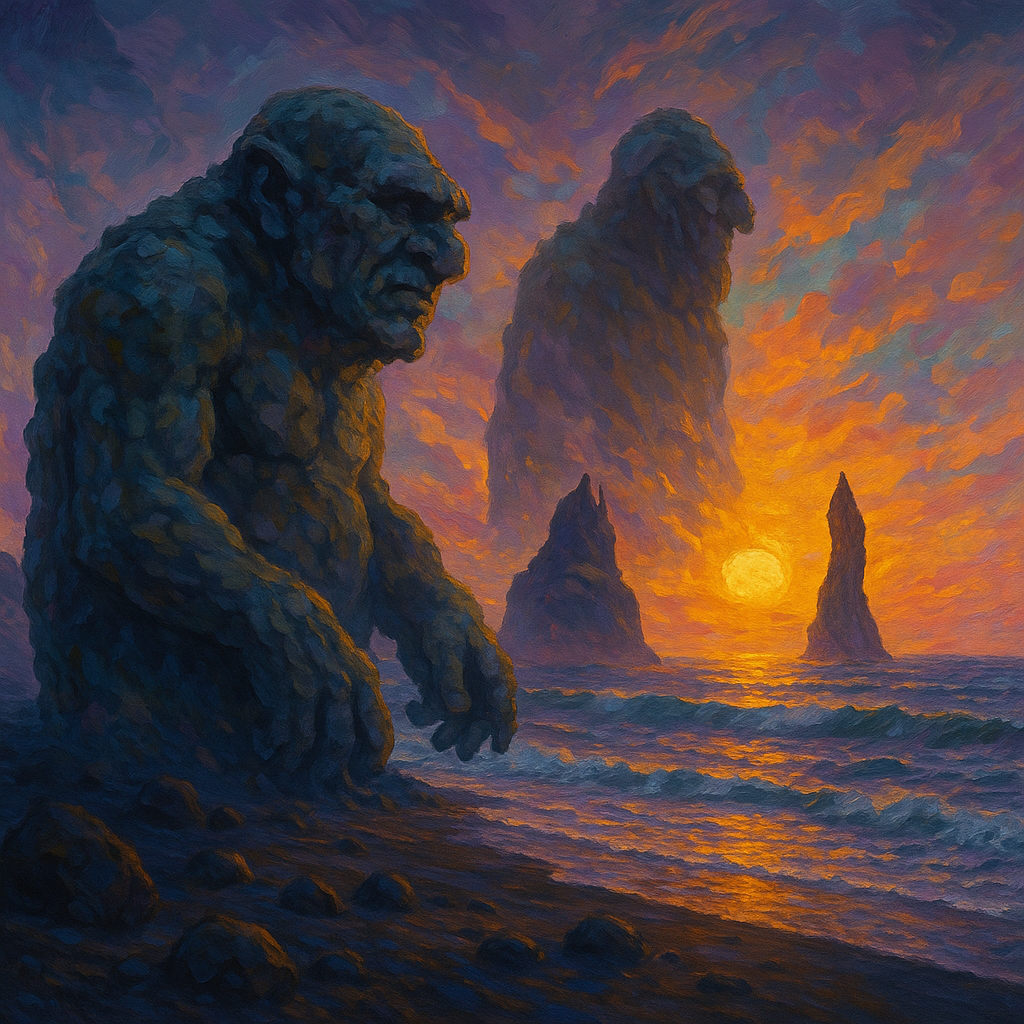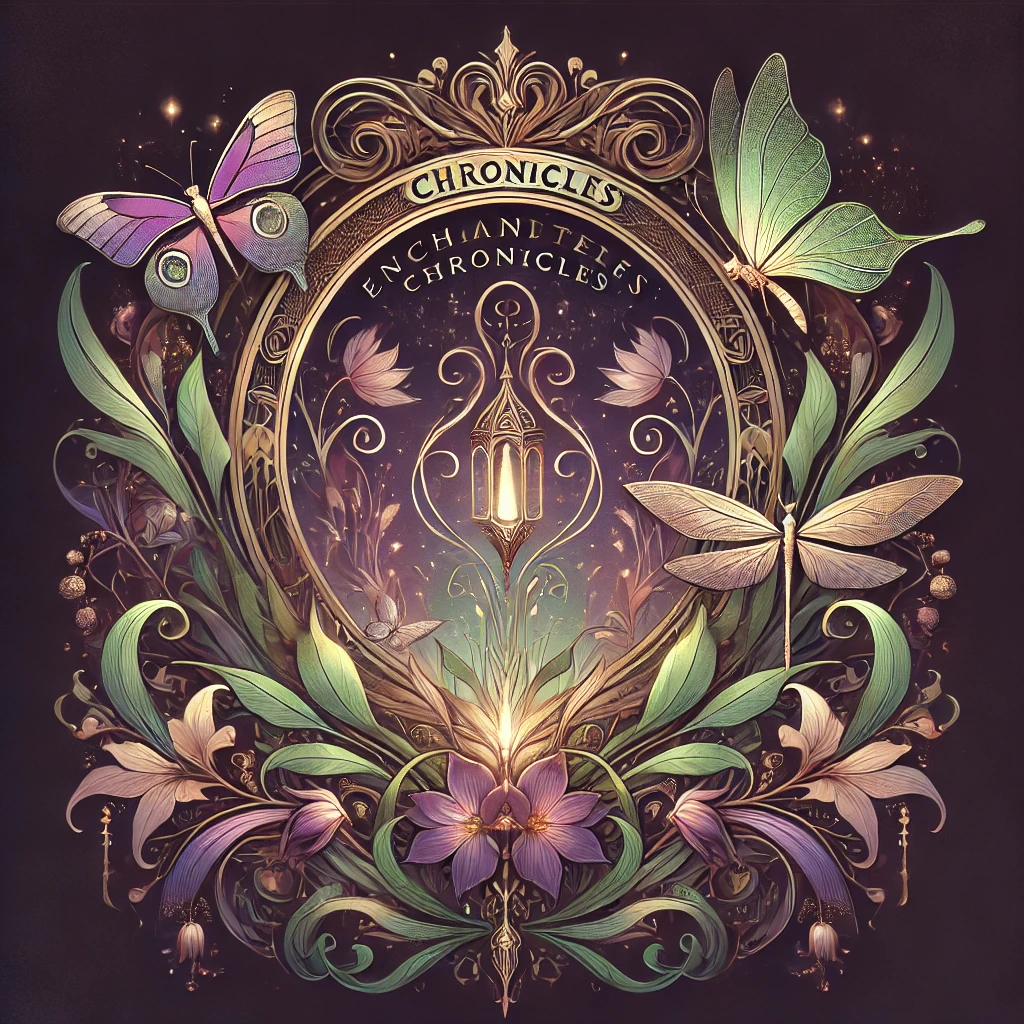Trapped by the Sunrise: The Untold Troll Legend of Iceland’s Reynisfjara Beach
Beneath Iceland’s most photographed black sand beach lies a chilling legend of greed, magic, and eternal punishment. Discover how two trolls, caught in the act of stealing a ship, became the towering stone sea stacks of Reynisfjara. More than myth, this ancient tale connects Iceland’s haunting natural beauty with centuries of folklore, still alive in today’s culture, cuisine, and celebrations.

By : Elaris Windglimmer

The Frozen Giants of Reynisfjara: Unveiling the 800-Year-Old Troll Legend of Iceland’s Black Sand Beach
Every year, thousands of travelers flock to the iconic black sands of Reynisfjara on Iceland’s south coast. Towering basalt columns loom over the roaring Atlantic waves, standing like ancient sentinels. But few know the eerie tale behind this natural wonder. According to Icelandic folklore, these stone pillars are not just geological marvels — they are trolls, forever petrified by the light of the rising sun.
The Legend of the Reynisfjara Trolls
The tale begins on a stormy night long ago, when two mountain trolls emerged from their dark cave dwellings in the cliffs. Under the cloak of darkness, they spotted a merchant ship floundering in the sea near Vik. Greedy and powerful, they waded into the ocean, determined to drag the ship ashore and claim its treasures.
But in their arrogant haste, the trolls failed to notice the approach of dawn. As the first golden rays of sunlight pierced the horizon, the sky lit up — and in that instant, the trolls turned to stone. Frozen mid-act, they were condemned to stand for eternity, caught between land and sea, forever reminding humankind of the price of greed and pride.
These petrified giants are known today as Reynisdrangar, the jagged basalt sea stacks just offshore from Reynisfjara. Towering up to 66 meters high, they remain one of Iceland’s most dramatic and mysterious natural landmarks.
Historical Roots and Cultural Context
Iceland’s folklore is deeply intertwined with its harsh landscape and isolation. During the Viking Age and medieval period, oral storytelling flourished in isolated farming communities. Trolls, elves, and spirits were used to explain the unknown: natural disasters, sudden storms, or eerie geological formations.
Trolls, in particular, were considered chaotic, giant beings who lived in caves or mountains and came out only at night. The transformation of trolls into stone upon exposure to sunlight is a recurring motif in Norse and Icelandic mythology. It reflected both fear and reverence for nature’s uncontrollable forces.
Though many Icelandic legends were eventually written down — notably in the 13th-century, the Reynisdrangar legend survived mostly through oral tradition in the Vik area. Passed down from fishermen and farmers, it was more a living belief than a written tale.
By the 19th century, with the rise of Romantic nationalism and interest in preserving local culture, scholars began documenting such legends. Yet, even today, the tale retains its folkloric quality, evolving with each telling — and still taught today.
From Ancient Myth to Modern Memory
Today, Reynisfjara is more than a scenic beach — it is a cultural touchstone. The legend of the trolls has taken on new life in tourism, art, and local identity.
Here’s how it continues to live on:
Tourism and Guided Storytelling
Local guides incorporate the troll tale into their Reynisfjara tours. With dramatic narration, they point to the sea stacks and recount the myth to spellbound visitors. Some tours offer twilight beach walks where stories are told by lantern light, blending nature, myth, and atmosphere.
Art and Sculpture
Several Icelandic artists have been inspired by the legend, creating paintings and sculptures of trolls in stone-like poses.
Trolls in Modern Media
The Reynisfjara trolls have also appeared in global pop culture. Their mythic backstory often accompanies these appearances, reinforcing Iceland’s image as a land of living legend.
Local Cuisine and Festivals
In recent years, the Vik region has leaned into its folklore for culinary and festive inspiration. Restaurants offer dishes like “Troll’s Feast Stew” made with wild herbs and lamb. Local bakeries shape pastries like sea stacks or serve black licorice cookies dusted with gold — a nod to the trolls’ desire for treasure.
There’s even talk of a summer festival, Reynisdagur, in development — blending local crafts, troll parades, and storytelling sessions for children. While not yet official, the concept reflects growing interest in reclaiming myth as community heritage.
Ecotourism with Mythic Flair
Sustainable tourism initiatives are pairing folklore with environmental awareness. Guided beach cleanups themed around “honoring the trolls” are growing in popularity. The message: if the trolls are guardians of the shore, we must not disappoint them.
A Legend That Endures
The tale of the Reynisfjara trolls continues to inspire wonder and caution. It’s a reminder of the forces that shape both land and legend — and of how stories, like stone, endure across generations.
As Iceland modernizes, this myth, rooted in ancient fears and hopes, becomes a bridge between past and present. Whether you’re a folklore lover, a curious traveler, or a seeker of the strange, Reynisfjara offers not just a view, but a vision — a place where stone and story are one.
Join our community of readers Subscribe To our newsletter!

Enchanted Chronicles: Ignite the Myths Within
Step into a world where ancient myths are no longer confined to books—they are part of your journey.
Sign up for free!
We won’t send you spam.
Unsubscribe at any time.
